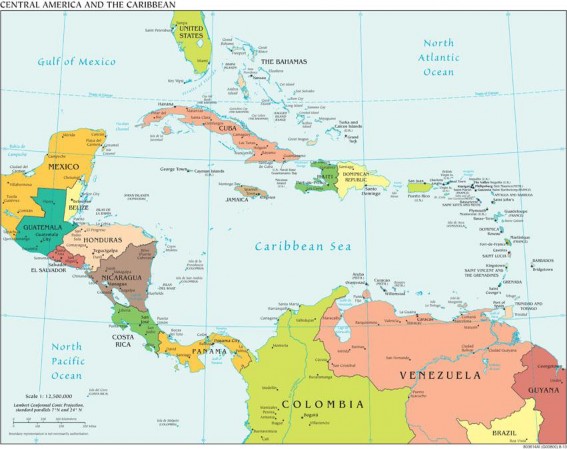Map12.2 The Caribbean

Image Source: https://www.cia.gov/library/publications/the-world- factbook//graphics/ref_maps/political/jpg/central_america.jpg

♤ The Spaniards from the first had concentrated on the Greater Antilles, leaving the smaller islands virtually unoccupied. As developments passed the Spanish Caribbean by, even portions of the larger islands were left under-occupied. Thus, in the course of the 17th century, the French and English, aided by buccaneers of their respective nationalities, were able to take over the small islands, Jamaica, and the western end of Hispaniola to grow tropical crops, above all sugar, for themselves.
♤ After three centuries of colonial rule, independence came rather suddenly to most of Spanish and Portuguese America. Between 1808 and 1826 all of Latin America except the Spanish colonies of Cuba and Puerto Rico slipped out of the hands of the Iberian powers who had ruled the region since the conquest
♤ On 2 December 1823, the USA issued the Monroe Doctrine. This was a policy of opposing European colonialism in the Americas. It stated that further efforts by European nations to take control of any independent state in North or South America would be viewed as "the manifestation of an unfriendly disposition toward the United States.” President James Monroe first stated the doctrine during his seventh annual State of the Union Address to Congress. The term "Monroe Doctrine" itself was coined in 1850.
